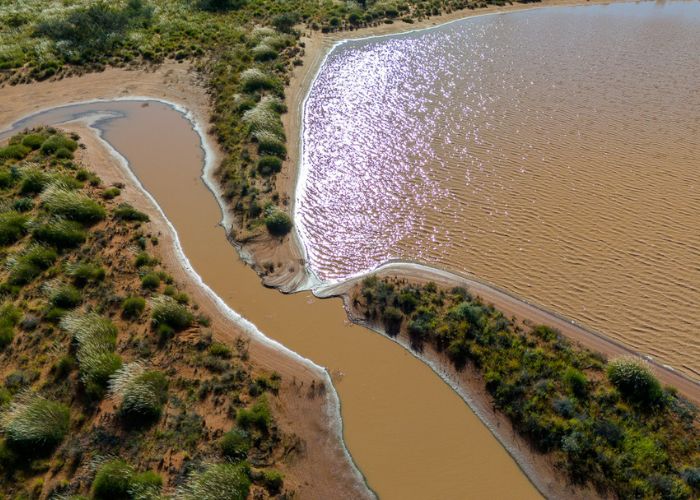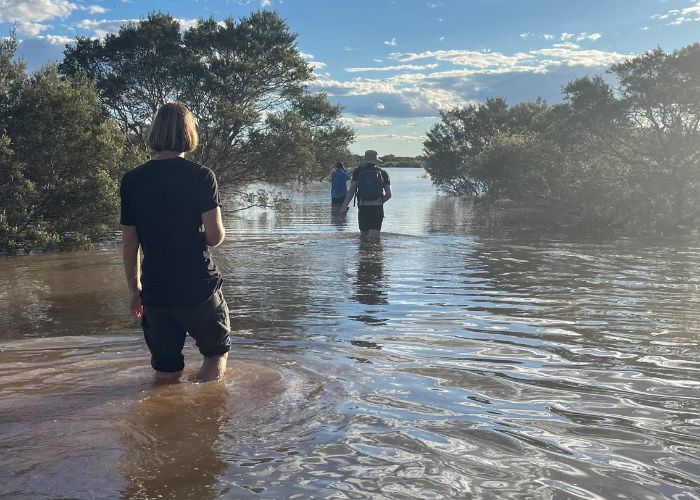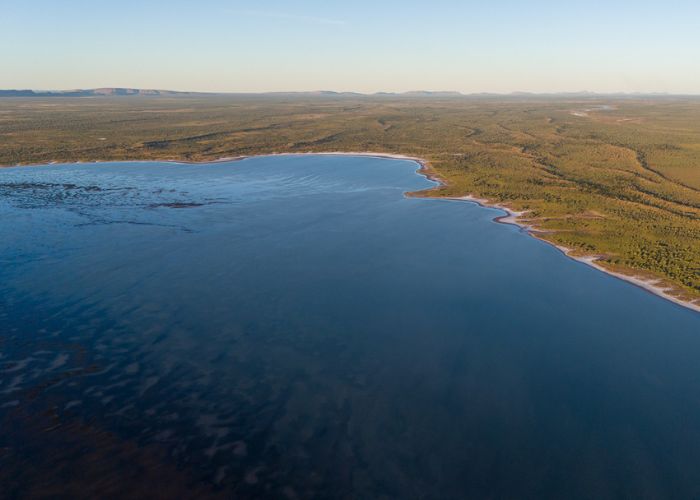The call of a tiny, desert-dwelling frog has been recorded for the first time at a remote wildlife sanctuary in Central Australia, to the delight of experts at the Australian Museum. A team of ecologists at Australian Wildlife Conservancy’s (AWC) Newhaven Wildlife Sanctuary made the recording of the Tanami Toadlet in March, a week after record-breaking rains inundated parts of the Northern Territory.
Dr Tim Henderson, AWC Wildlife Ecologist at Newhaven, said he and his team were excited to have made the first sound recording of the elusive species. “It’s not often that you get to document something like this for science for the first time.”
First identified by scientists in 1981, the Tanami Toadlet grows to just four centimetres and lives across an unlikely expanse of country in the Tanami and Great Sandy Deserts, in the Northern Territory and Western Australia. It’s one of 28 small, inconspicuous frog species in the genus Uperoleia, commonly known as toadlets because of their bumpy skin (though they are not closely related to toads).
Dr Henderson said that the recording was made using a smartphone app developed by the Australian Museum.
“The FrogID app gives us an easy way of detecting and recording frogs which can be hard to spot, or difficult to identify by appearance alone.”
 Tim Henderson/AWC
Tim Henderson/AWC
Dr Jodi Rowley, Lead Scientist of FrogID and Curator of Amphibians at the Australian Museum, said she was very excited to confirm the toadlet’s call.
“It’s taken 43 years since we first recognized this species for someone to record its call – that’s pretty amazing! There’s still so much to discover about Australian amphibians, and this recording will make it easier for other people to detect Tanami Toadlets in the future.”
Recent rain has filled the sanctuary’s ephemeral lakes and wetlands, triggering a flush of plant and animal activity and prompting the frogs into a frenzy of courtship and breeding.
 Aliesha Dodson/AWC
Aliesha Dodson/AWC
“Over the Easter long weekend following all the rain, we visited one of the claypan lakes to look for frogs and see if we could track down the Tanami Toadlet. The lake is extremely full at the moment, and while we were there we heard lots of frogs calling. The calls were really distinctive, and unlike any of the other species that we find out here regularly,” Dr Henderson said.
“We were eventually able to pinpoint the calls through the undergrowth to locate these little frogs, which matched the description for Tanami Toadlets.”
The FrogID app is freely available to download and is designed to convert the enthusiasm of professional and amateur citizen scientists into valuable scientific data.
 Tim Henderson/AWC
Tim Henderson/AWC
Central Australia experienced a huge rainfall event in March, with Newhaven Wildlife Sanctuary recording over 316mm over the month.
“Newhaven looked more like the Okavango delta than a desert,” joked Dr Henderson. “It was our third wettest month on record, and we’ve already received more than the annual average rainfall in 2024.”
An earlier genetic study of the genus Uperoleia to which the Tanami Toadlet belongs showed that the species evolved around the same time as vast, arid dune fields were spreading across inland Australia. It’s closest relative lives in the monsoonal tropics, in the west Kimberley, WA.
Support AWC's science-led conservation work to safeguard the Bilby's future
Donate Now